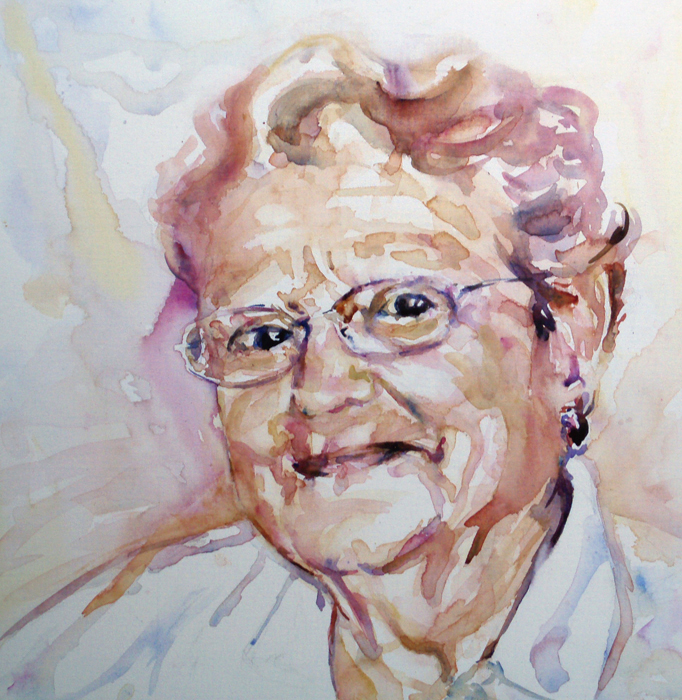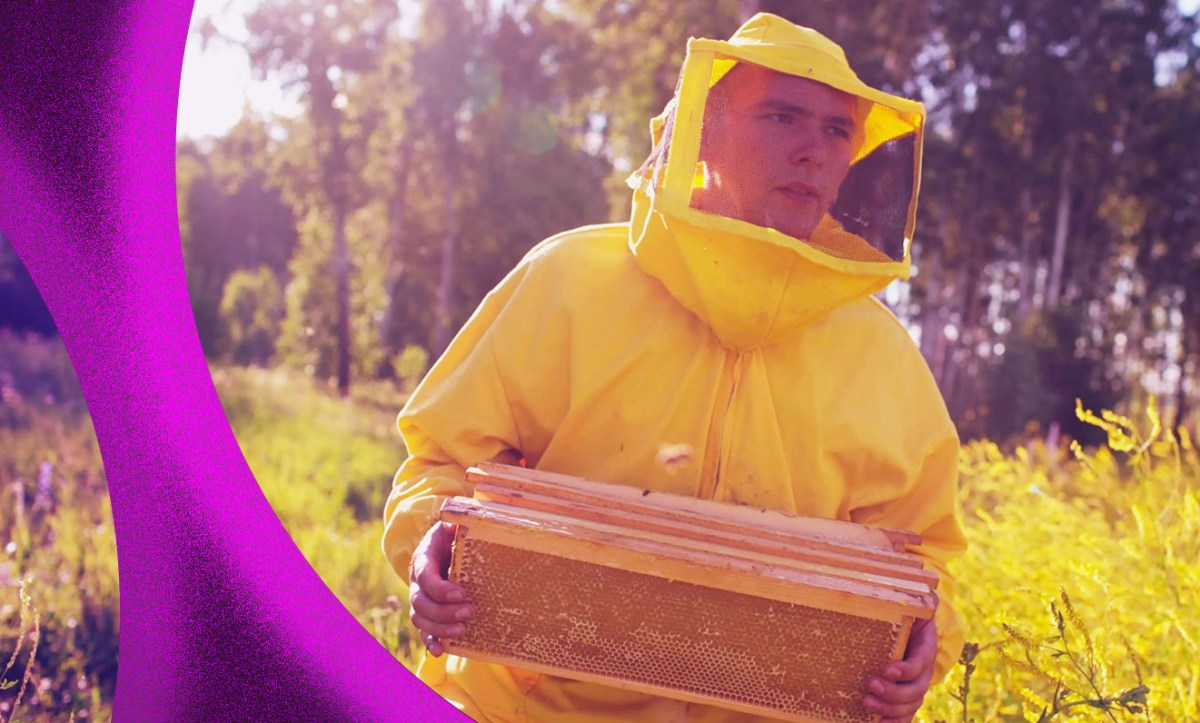In this FREE journey to creative recovery, we’re following Julia Cameron’s bestselling creativity self-help manual, The Artist’s Way, tracing the book’s 12-week program with a series of inspiring ArtsHub articles, resources and ideas for artist-date activities. There’s also a Facebook community group you can join for discussion and support.
To recap, the idea with The Artist’s Way is to commit yourself to a structured creative recovery that will spark joy, remove blocks and build the confidence to play and take risks – whether you’re a professional artist or not. The main tools of the course are Morning Pages and Artist Dates. You can read previous articles here:
- Introduction: an invitation to change your life
- Week 1: Recovering a sense of safety
- Week 2: Recovering a sense of identity
- Week 3: Recovering a sense of power
- Week 4: Recovering a sense of integrity
- Week 5: Recovering a sense of possibility
- Week 6: Recovering a sense of abundance
- Week 7: Recovering a sense of connection
- Week 8: Recovering a sense of strength
- Week 9: Recovering a sense of compassion
Or you can jump right in and follow along, wherever you are in the process. Grab a copy of the book, start reading and look out for ArtsHub’s weekly articles, published each Monday.
Keep up to date with The Artist’s Way series here
Week 10: Toxic patterns, blocks and protecting against them
Every creative person has their preferred ways to block their own creativity, says Julia Cameron. From food to sex to hyper-busyness, ‘Each of us favours one or two ways particularly toxic to us, because they block us so effectively.’
This week’s chapter is all about identifying the blocks that specifically apply to us, and working to protect against them so they no longer wield the same power. Chances are, you already know what the problem areas are, but you need support to address them with compassion.
Common blocks to creativity
Food
Who knew food and overeating could be a creativity issue? But this sounds familiar: ‘As the shaky feeling comes over them that they are going too fast and God knows where, that they are about to fly apart, these people reach for food. A big bowl of ice cream, an evening of junk food, and their system clogs. What was I thinking? What…? Oh, never mind.’
The cartoon below, by Mark Parisi made me laugh.
I’m writing this article on a Saturday afternnon, after stuffing myself with a big bowl of salty chips, which I craved because I’m a bit hungover from last night. Which brings us to our next block:
Alcohol and other drugs
A drink or a night of excess can be life affirming and celebratory. But if it’s a regular way to numb or turn off the inspiration and excuse yourself from the quiet work of listening and making art, then it could be a problem.
For me, a glass of wine or a cocktail is a “special treat” that guarantees a bad night’s sleep and a tired day afterwards. What are the costs of that moment of “release and relax” from anxiety at the end of the day? This is something I need to think about more, and Cameron, being an AA advocate, would have lots to say about it, as would my teetotaller parents.
Overwork and the need to stay busy
Workaholism is the drug of choice for many. Working too hard and too many hours is rewarded in our culture and generally seen as virtuous. But artists need time and space to listen and play – to hear that “still, small voice” of inspiration, which is impossible when we’re too busy.
As Cameron writes of workaholics, ‘Must-dos and multiple projects are drawn to them like flies to a soda can in the sun. They go, “Buss, buzz, buzz, swat!” as they brush aside the stray thought that was an insight.’
An addiction to collecting and meeting deadlines, and feeling needed and “productive”, can be a way of avoiding the other things we should be doing to express our full and rounded humanity.
Sex and love
I know this block well. I’ve lost years of creative output to falling in love and turning my lovers into idols. I’ve struggled, finally, to turn some of that obsession into material and inspiration for writing, but it feels like Cameron is speaking directly to me when she describes it:
‘A mesmerising, titillating hypnotic interest slides novel erotic possibilities in front of the real novel. The new sex object becomes the focus for creative approaches.’
While artists are allowed their muses, it takes strength, self-knowledge and discernment to keep things in proportion and retain a sense of vocation. After all, there is a time for everything, including making love, and making art.
Friends, family, drama
Being part of a community is part of life and, like the other blocks mentioned above, none of these is bad in and of themselves, but can become problematic in the ways we use them to avoid our creative longings and impulses.
In previous chapters, we’ve worked through the idea that being needed by others can be a form of addiction. The inability to draw appropriate boundaries around our own time is fatal for artists. I’ve talked about how drama, gossip and extreme sociability – saying “yes” to every invitation – can be a delicious form of distraction and procrastination for me.
It takes strength to say no to people, and to our own desire to people-please. Giving up the ego gratification of being popular or feeling irreplaceable in the lives of others requires some deep inner work around fears of abandonment.
Anxiety, faith and working with blocks
Cameron says that blocking is essentially an issue of anxiety and faith. ‘Rather than paint, write, dance, audition and see where it takes us, we pick up a block. Blocked, we know who and what we are: unhappy people.’
It’s counterintuitive, but for some of us, the idea of real happiness and creative growth and health feel threatening precisely because they’re unfamiliar. Who would we be if we were productive, prolific artists? We’d be strangers to ourselves, and perhaps to those who love us, and that can be scary. Learning how to feel safe amid this change is part of the genius of The Artist’s Way.
Fame and competition
The desire for fame is another dangerous and addictive drug, says Cameron. Fame prompts us to look outwards for validation, recognition and praise, instead of looking at the work of art itself, and how we are progressing and developing it.
‘The point of the work is the work. Fame interferes with that perception.’
A focus on fame, and whether we are getting enough of it, or gaining or losing it, will always create a sense of lack and wanting more.
So too, competition and constantly comparing ourselves with others, is another spiritual drug. You know that queasy feeling you get when you’re scrolling Instagram or LinkedIn and reading posts by more “successful” artists or writers who’ve just won a prize or got a great job? The words “thrilled”, “humbled” and “honoured” can be incredibly triggering (or is it just me?).
Focusing on the competition breeds a sense of fear and lack, of being left out and left behind. As Cameron writes, ‘When we focus on competition we poison our own well, impede our own progress. When we’re ogling the accomplishments of others, we take our eye away from our own through line.’
For me, it’s been very healing to witness the candid confessions of more successful artists talking about their difficulties and insecurities around not winning, or missing out on successes, because this reinforces the truth: that no matter how much you have, someone will always have more – and less.
As lovely as it is to receive praise and good reviews, or to find the right audience for what you’re putting out there, the work itself must remain its own intrinsic reward, and this is a relief to remember.
My journey with The Artist’s Way this week
I finally submitted the structural redraft of my novel to the publisher on Wednesday. This came after six weeks of intense work, cutting 30,000 words, compressing chapters and tightening up narrative arcs.
Instead of feeling triumphant when I pressed “send”, I felt a muted sense of relief. There was also some real anxiety about letting it go into the world for judgement. I keep comparing this experience to that of finishing my last book, where I felt elation and a confident sense of holding the whole thing together in my head, whereas this one is bigger and unwieldier and my brain feels tired. I’ve been trying something new. This is a much bigger story, a piece of fiction instead of memoir, covering a seven-year period and told from three points of view. It’s been a huge learning process, and what I feel is more like Leonard Cohen’s ‘cold and broken hallelujah’ than a win.
Because of The Artist’s Way, I see these fears for what they are, my fragile artist child feeling exposed, exhausted and vulnerable. I’m tempted to retreat into a creative U-turn, but I know what all I need right now is a little nap and a good meal and a few days away from the keyboard and the bad office chair that is ruining my back.
So, this week, I’m going to focus on physical recovery. A facial for my stressed skin, some more exercise, repotting some plants, and doing an actual artist date, finally! My bottom line is that I am not going to abandon myself, my health, or the small steps that are required to keep going and get the book out there.
And in the spirit of recovery, I’m going to stop writing now and rest even though it feels like there’s more to be said.
Creativity Community sharing
I’m continually inspired by the sharing of works on our Creative Community Facebook page, though hoping to see more art forms represented there soon.
This week’s featured post seems particularly apt for Mothers’ Day. It’s a watercolour portrait of her mother by artist Dee Jackson, who says:
‘Over the years I have created portraits for families that are grieving. I do this using happy snaps, i.e. referencing the family’s happy private photos. This means that I am allowed the privilege of seeing the love that each family has for their children, parents, siblings etc. I cannot show these images publicly but here is a portrait of my own dear mother who sadly is no longer on this earth. I loved creating this portrait – it shows my Mum’s cheeky side. When I am feeling sad or happy I look at this painting – and it comforts me.’

Other resources
- Check out ArtsHub Events listings with options in all states – activities including art exhibitions, theatre, dance, writing festivals.
- Visit ArtsHub‘s The Artist’s Way Community Facebook group to share your journey, connect with others and ask questions. We’d love to hear from you.






